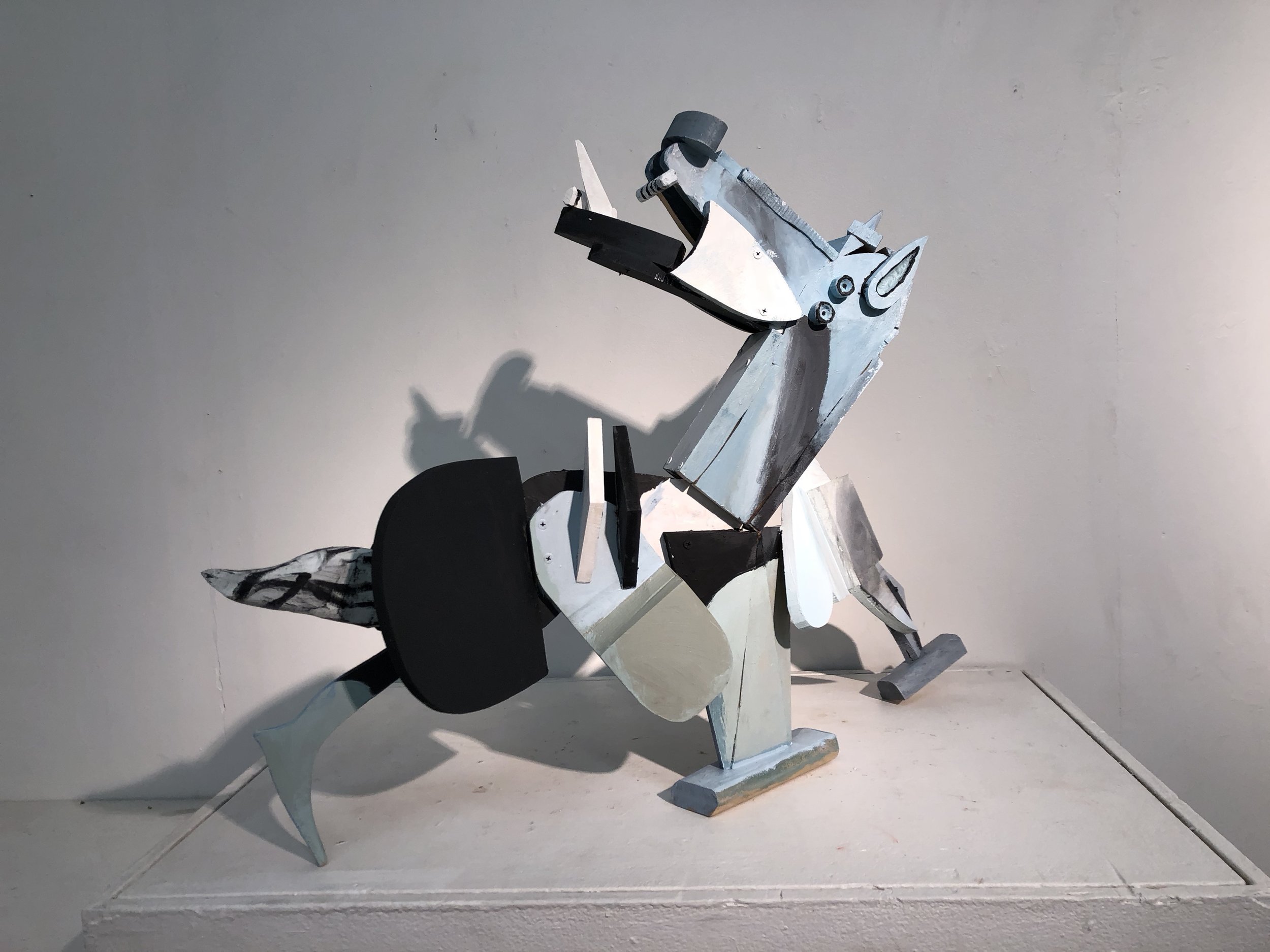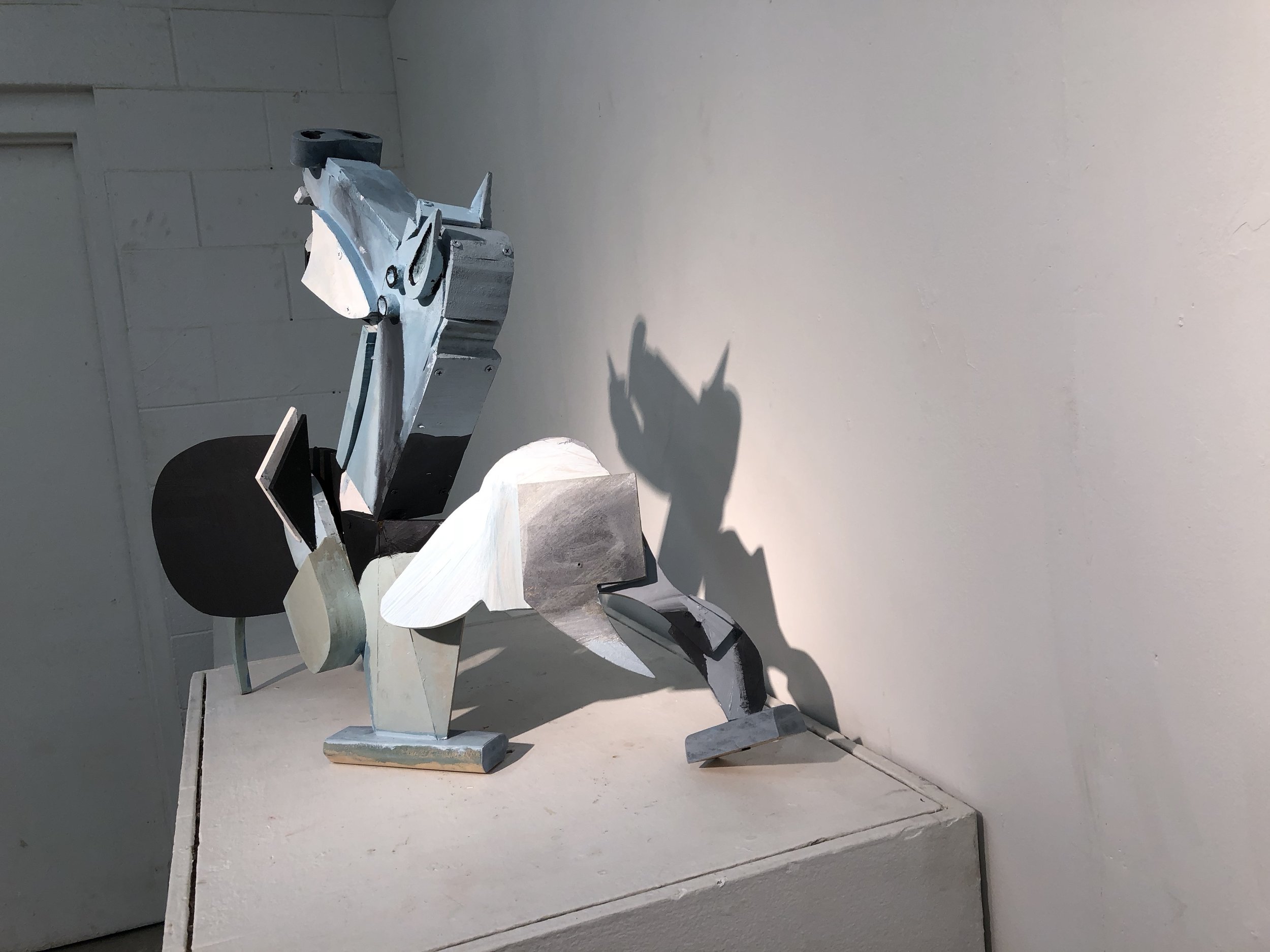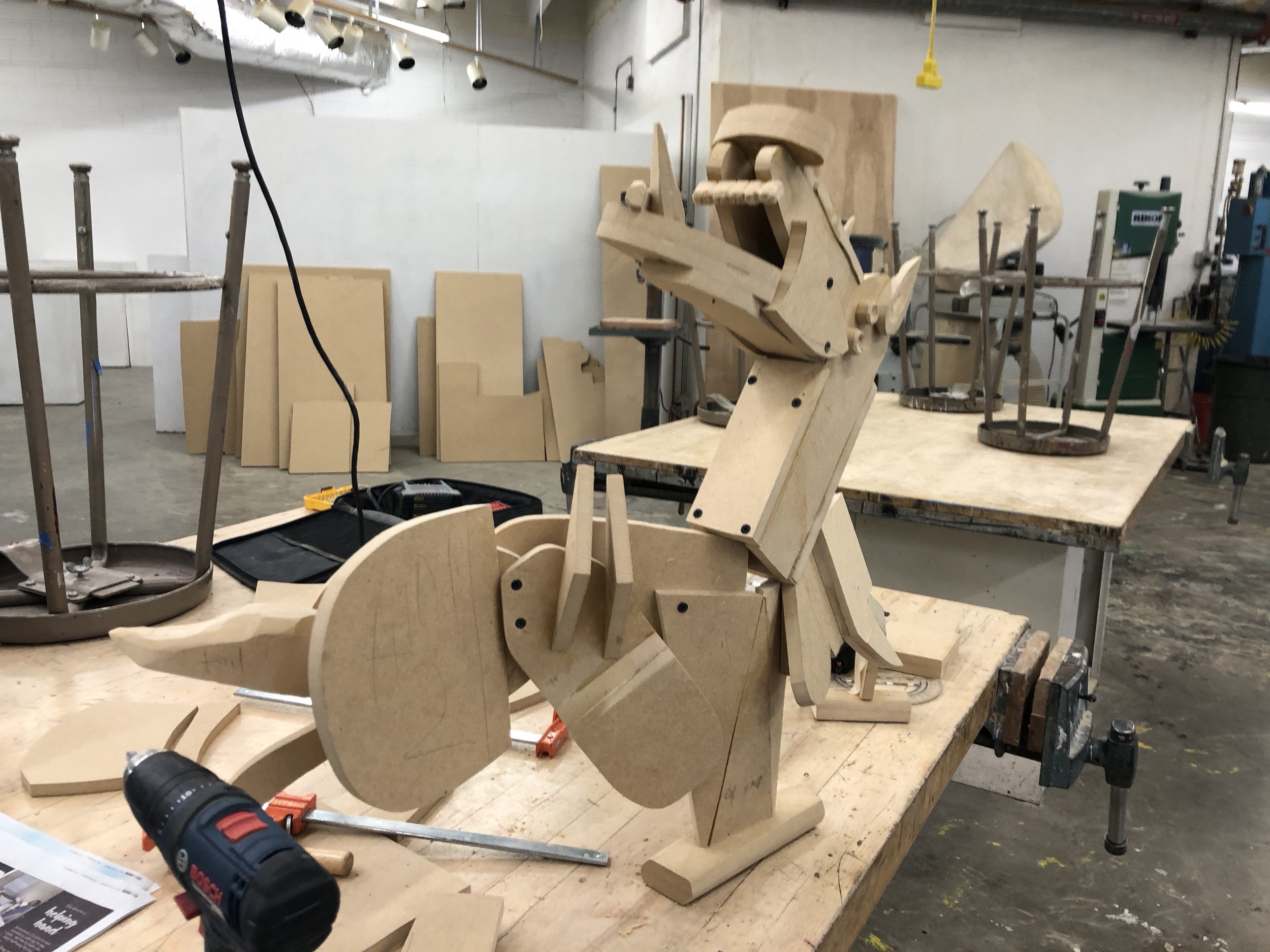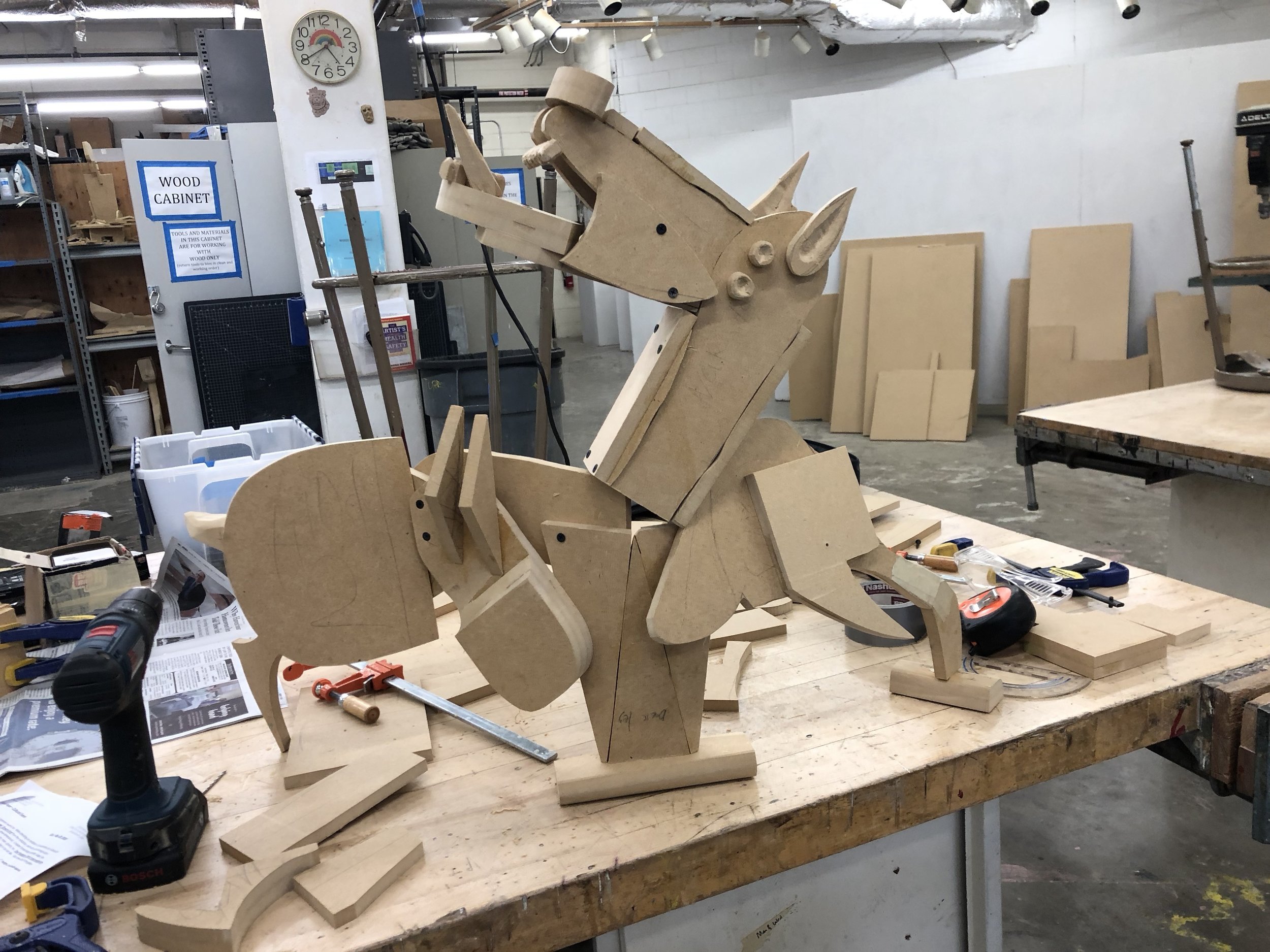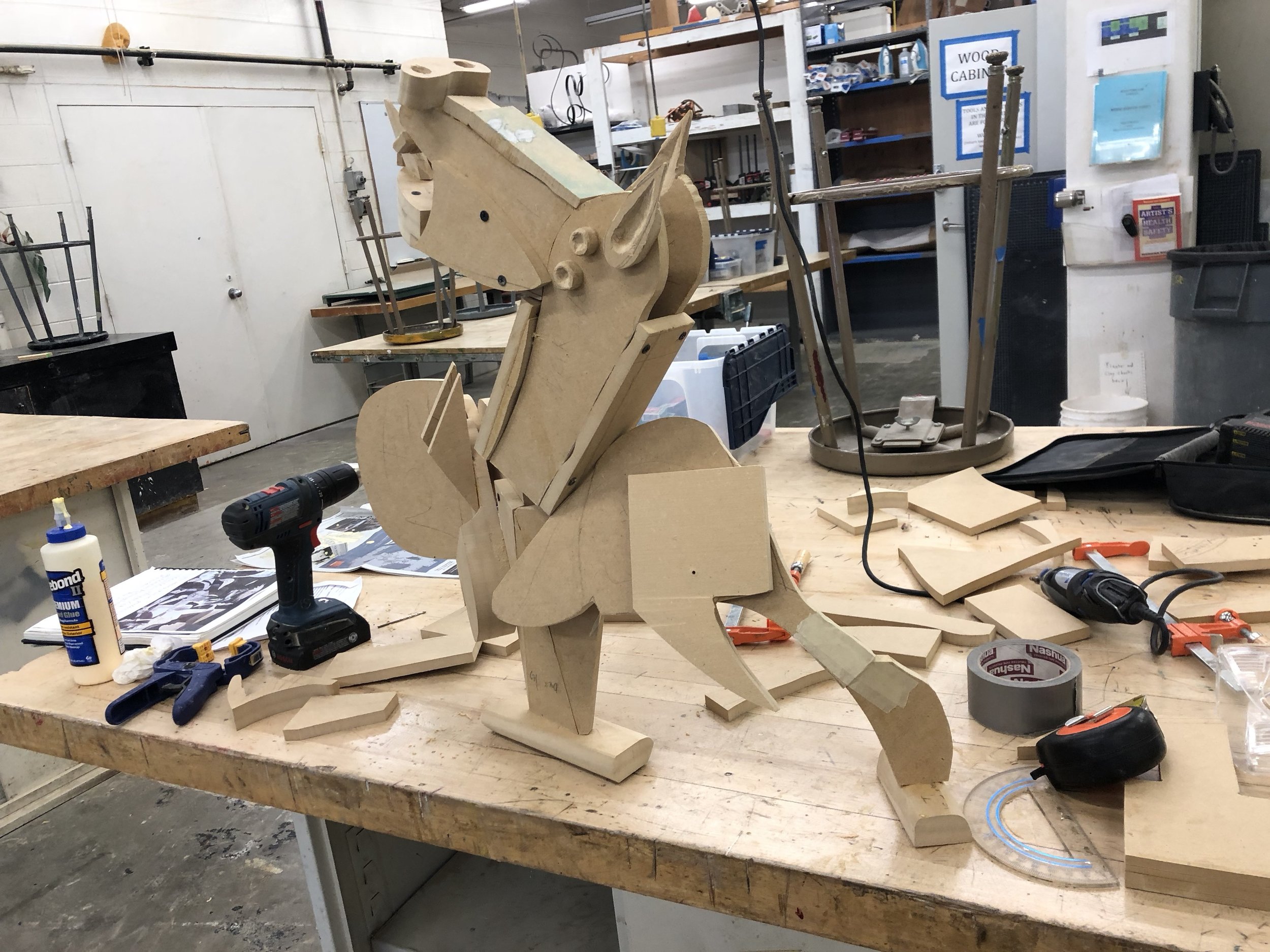Guernica
An Homage to Picasso
I believe that if something is going to be stylized in a certain way, that style should inform the meaning of the piece. When it comes to cubism, the style is oftentimes the meaning. The piece can be about seeing things from multiple angles at once, and so the physical representation is appropriate. However, the reality of seeing multiple angles at once is that it makes figures look distorted and in extreme pain. Guernica is about that pain. It is in direct response to the Nazi’s bombing of a small Spanish town during the civil war, as per the request of the dictator Francisco Franco. All of the figures in this incredibly powerful painting are in extreme pain, but in the center of it all is an innocent horse screaming, with pure fear in its eyes, as its body is blown apart. This use of style to inform the emotion of that horse is what makes Guernica such a moving piece, and why I chose to render it in 3D with wood. Picasso intentionally abstracts the horse as the eye moves down its body, which proved incredibly difficult to visualize, especially around the horse’s midsection. However, in order to make the horse take on the shape it seems to take on in the painting, it had to bend around and have obtrusive pieces entering into the space. Many criticize Picasso for his minimizing of detail in order to focus more on the essence of form. I wished to emulate this simplification by not worrying about making a horse, but rather an accurate rendition of Picasso’s horse. When viewers see the horse on its own, with the context of the painting removed, they should still feel the agony the horse feels in a sympathetic way.
